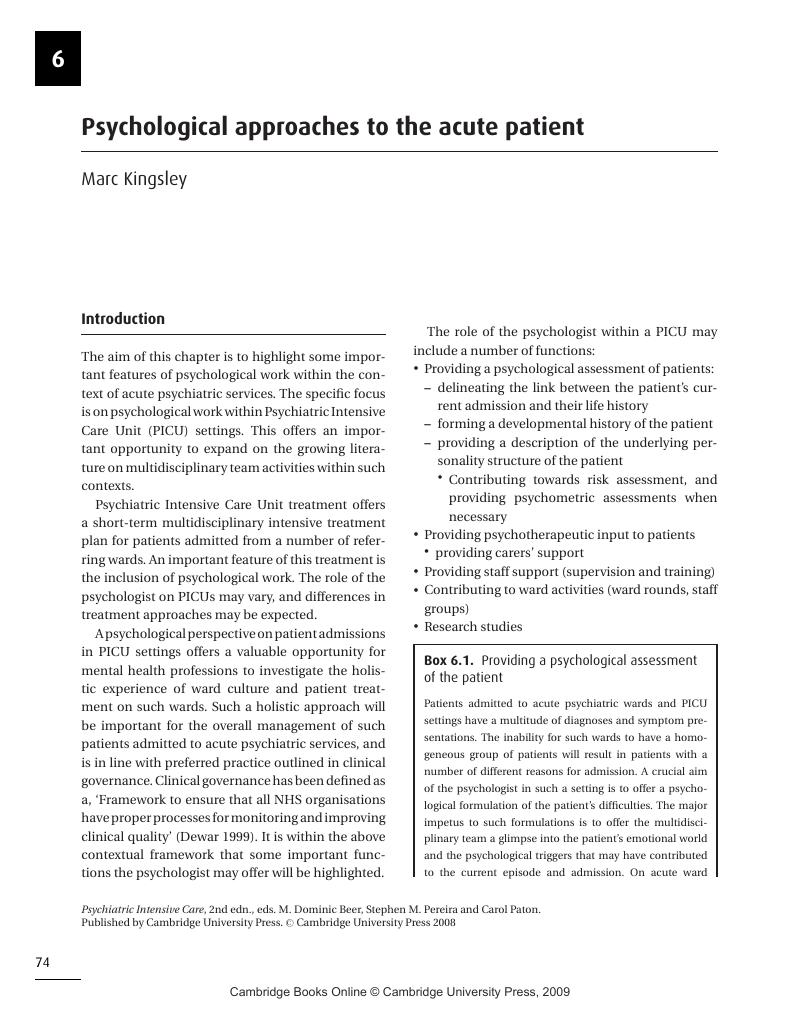Book contents
- Frontmatter
- Contents
- List of contributors
- Preface to second edition
- Preface to first edition
- Foreword
- Part I Therapeutic interventions
- 1 Psychiatric intensive care – development and definition
- 2 Management of acutely disturbed behaviour
- 3 De-escalation
- 4 Rapid tranquillisation
- 5 Pharmacological therapy
- 6 Psychological approaches to the acute patient
- 7 Psychological approaches to longer-term patients presenting with challenging behaviours
- 8 Seclusion – past, present and future
- 9 Restraint and physical intervention
- 10 The complex needs patient
- 11 Therapeutic activities within Psychiatric Intensive Care and Low Secure Units
- 12 Risk assessment and management
- Part II Interface issues
- Part III Management of the Psychiatric Intensive Care Unit/Low Secure Unit
- Index
- References
6 - Psychological approaches to the acute patient
from Part I - Therapeutic interventions
Published online by Cambridge University Press: 22 August 2009
- Frontmatter
- Contents
- List of contributors
- Preface to second edition
- Preface to first edition
- Foreword
- Part I Therapeutic interventions
- 1 Psychiatric intensive care – development and definition
- 2 Management of acutely disturbed behaviour
- 3 De-escalation
- 4 Rapid tranquillisation
- 5 Pharmacological therapy
- 6 Psychological approaches to the acute patient
- 7 Psychological approaches to longer-term patients presenting with challenging behaviours
- 8 Seclusion – past, present and future
- 9 Restraint and physical intervention
- 10 The complex needs patient
- 11 Therapeutic activities within Psychiatric Intensive Care and Low Secure Units
- 12 Risk assessment and management
- Part II Interface issues
- Part III Management of the Psychiatric Intensive Care Unit/Low Secure Unit
- Index
- References
Summary

- Type
- Chapter
- Information
- Psychiatric Intensive Care , pp. 74 - 88Publisher: Cambridge University PressPrint publication year: 2008



